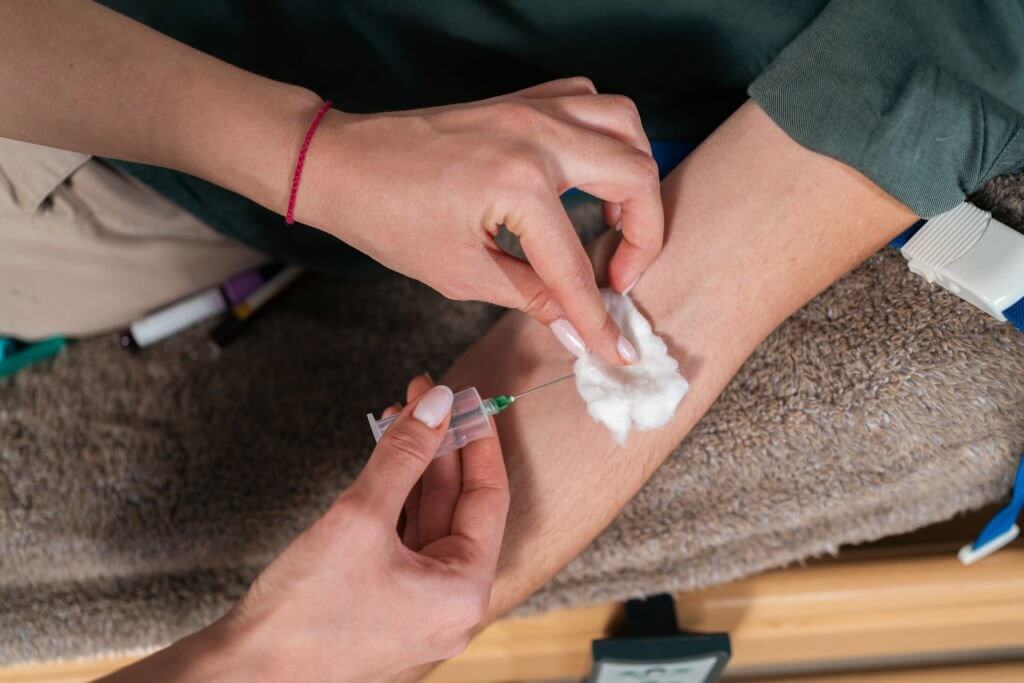Using Chlorhexidine Swabs to Disinfect: A Key to Safer Blood Products

How Does Bacteria Get into Donated Blood Products?
Bacterial contamination of donated blood products like red blood cells and platelets remains a major challenge for blood banks and transfusion services. The presence of bacteria in blood can lead to transfusion reactions and morbidity in recipients. Studies show that up to 90% of platelet unit contaminations originate from bacteria on the donor's skin. When the phlebotomist inserts the needle to collect blood, it can push skin flora from the surface into the collection bag. The puncture wound creates an opportunity for organisms like coagulase negative staphylococci and Bacillus cereus to enter the bloodstream. Effective skin disinfection at the venipuncture site is critical to reducing this source of contamination.
Which Disinfectants Work Best?
Researchers compared the efficacy of two different donor arm disinfection methods. One used 2.5% chlorhexidine gluconate in 75% isopropyl alcohol. The other used 70% alcohol followed by 2% povidone iodine followed by 70% alcohol. Skin samples were collected before and after disinfection and cultured. The study found significantly lower bacterial colony counts after disinfection with chlorhexidine compared to alcohol and iodine. The mean colony count with chlorhexidine was 0.28 versus 0.90 with alcohol and iodine. Chlorhexidine was over 3 times more effective at reducing skin flora that could contaminate blood collections.
How Can Blood Banks Prevent Bacterial Contamination?
Some strategies blood centers use to minimize bacterial contamination risks include improved skin disinfection protocols, closed plastic blood bags instead of glass bottles, and bacterial screening tests. The optimal donor arm preparation uses a broad spectrum disinfectant like chlorhexidine that is fast-acting and persistent on the skin. Proper technique in concentric circles covering a wide enough area is also key. This removes more resident flora versus transient bacteria. Continued monitoring, reporting, and analysis of any reactions caused by bacteria will help identify gaps and drive process improvements. With vigilance and evidence-based practices, blood banks can provide the safest products possible for transfusion patients.
How Do Apheresis Platelets Compare?
Apheresis platelet donations involve separating platelets from a single donor's blood and returning the other components. This method poses a higher risk of contamination than whole blood donations. One study found bacterial contamination rates of 51 per 100,000 units for apheresis platelets compared to only 2.6 per 100,000 for red cell concentrates. When researchers compared disinfection methods for apheresis donors, they again found chlorhexidine superior to alcohol and iodine. Just 1.5 mL of 2% chlorhexidine was more effective than the multi-step alcohol and iodine procedure. Apheresis platelets may require extra vigilance and care during donation to maintain safety. Using chlorhexidine for arm disinfection can significantly reduce bacterial contamination of these valuable cellular products.
Click to View → Mantacc Chlorhexidine Swabs
Reference
Ganesan, Nidhya & Shanmugham, Hari & Kumar, Prasanna. (2019). Analysis of Bacterial Contamination in Blood Bank: Comparison of Two Different Donor Arm Disinfectant. Saudi Journal of Pathology and Microbiology. 04. 671-674. 10.36348/SJPM.2019.v04i09.008.








